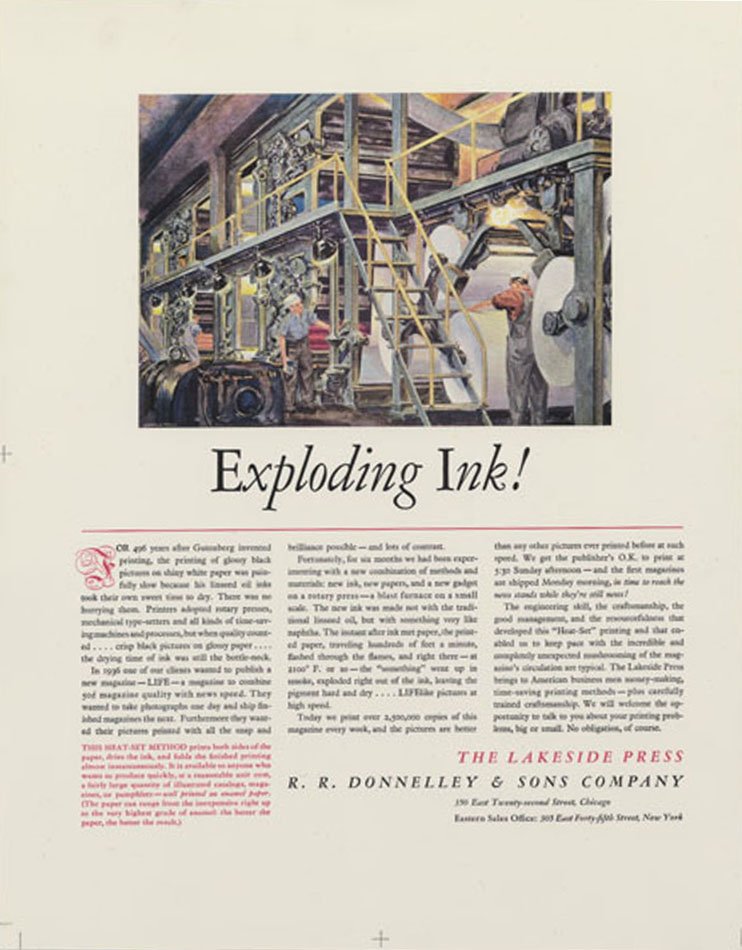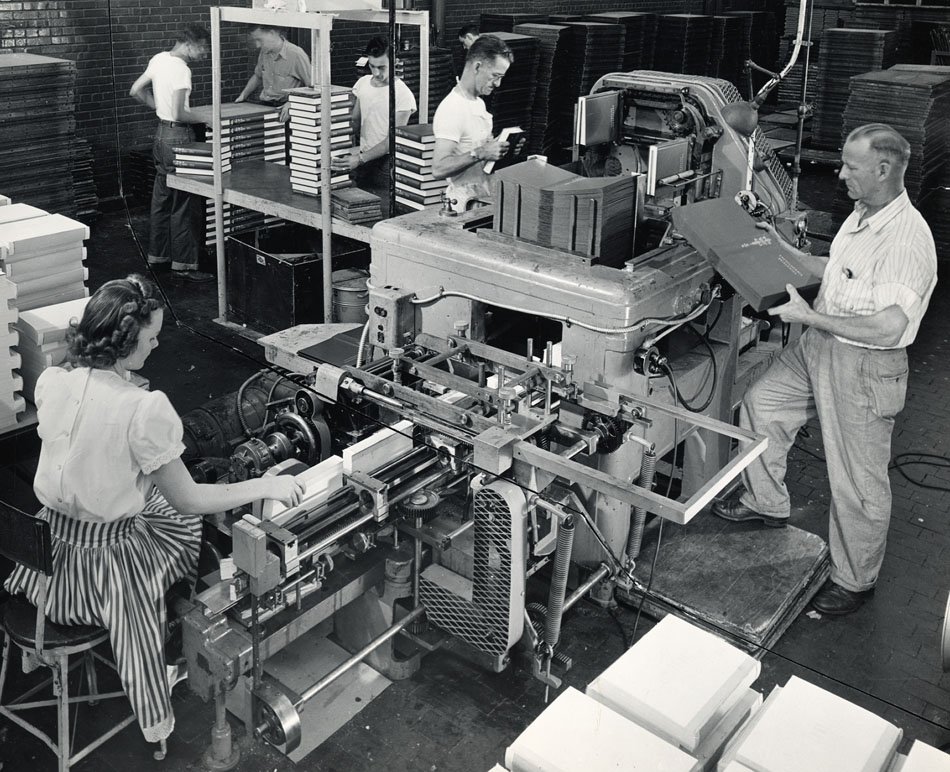Research and Development After World War II
Throughout the 1950s, demand for printed goods put pressure on the company's capacity. In 1951 RR Donnelley produced 136,638 sets of World Book encyclopedias, a 50-percent increase from the previous edition. Between 1952 and 1954, the Revised Standard Version of the Bible sold more than four million copies.
In response to these enormous jobs and an increased customer appetite for books, RR Donnelley's engineering department in the 1950s began to refashion the binding operation, building seven automated binding lines at the company's Crawfordsville, Indiana, plant that were modeled on General Motor's assembly lines. With speed and precision, RR Donnelley could now print and bind more books, magazines, directories, and catalogs in one eight-hour day than could be printed in a week just two decades before.
The same, however, could not be said about typesetting, which in the late 1960s involved hundreds of workers at keyboards manually entering each character. RR Donnelley addressed this problem in 1967 by forming the Electronic Graphics Division. By 1968 this section was using an IBM 360/40, the most advanced computer of the time, and a RCA Videocomp 832, the only character-generating cathode-ray tube then in commercial use.
Another advance responded to the need of Farm Journal, an RR Donnelley customer, to create editorial content tailored to an individual reader's interests. The solution was Selectronic, an RR Donnelley patented technology combining computers with automated in-line binding lines to assemble a flexible-content magazine or catalog. If the Selectronic computer showed that someone lived in a high-rise, a catalog could be compiled omitting pages of lawn-care products that would be included in mailings sent to suburban homes. Selectronic technology also provided high-speed variable address labeling of magazines and catalogs using ink-jet technology developed in partnership with the A. B. Dick Company, a leader in the field.
In 1984, RR Donnelley, through its Singapore facility, was the first printing company to link the United States, Europe, and the Far East through satellite transmission.


